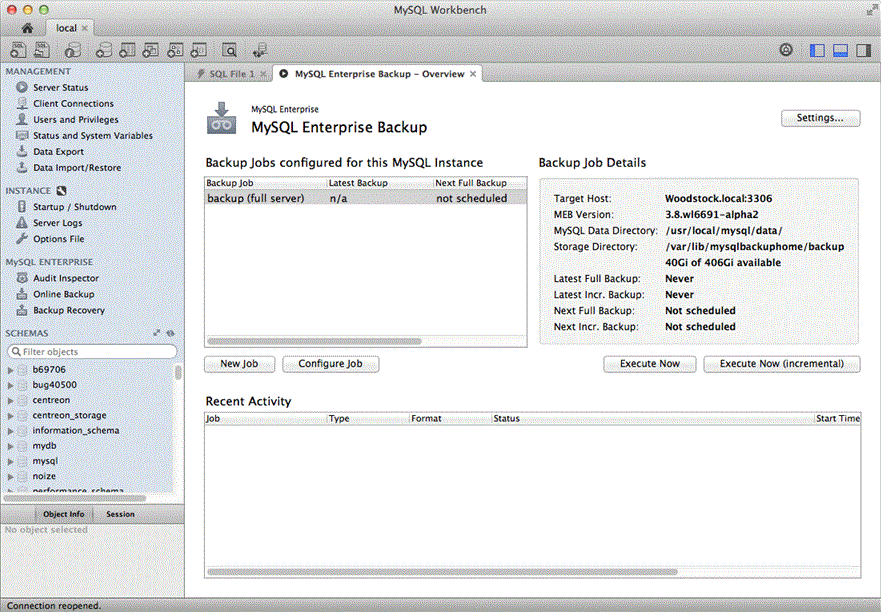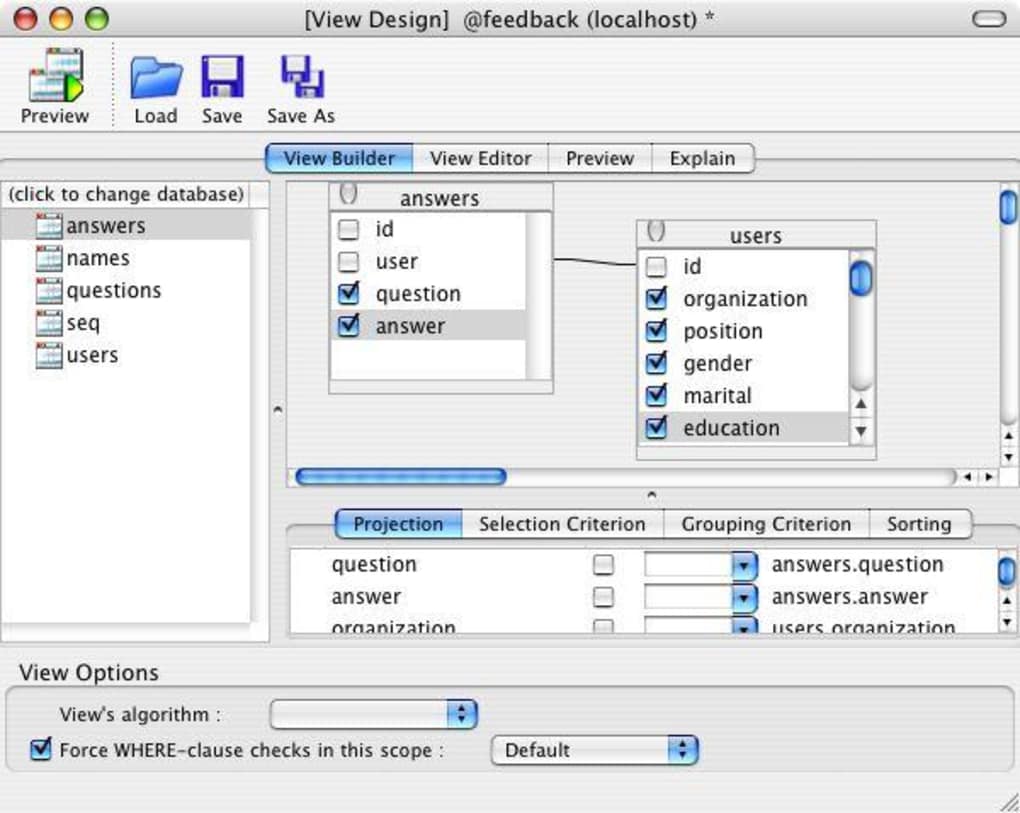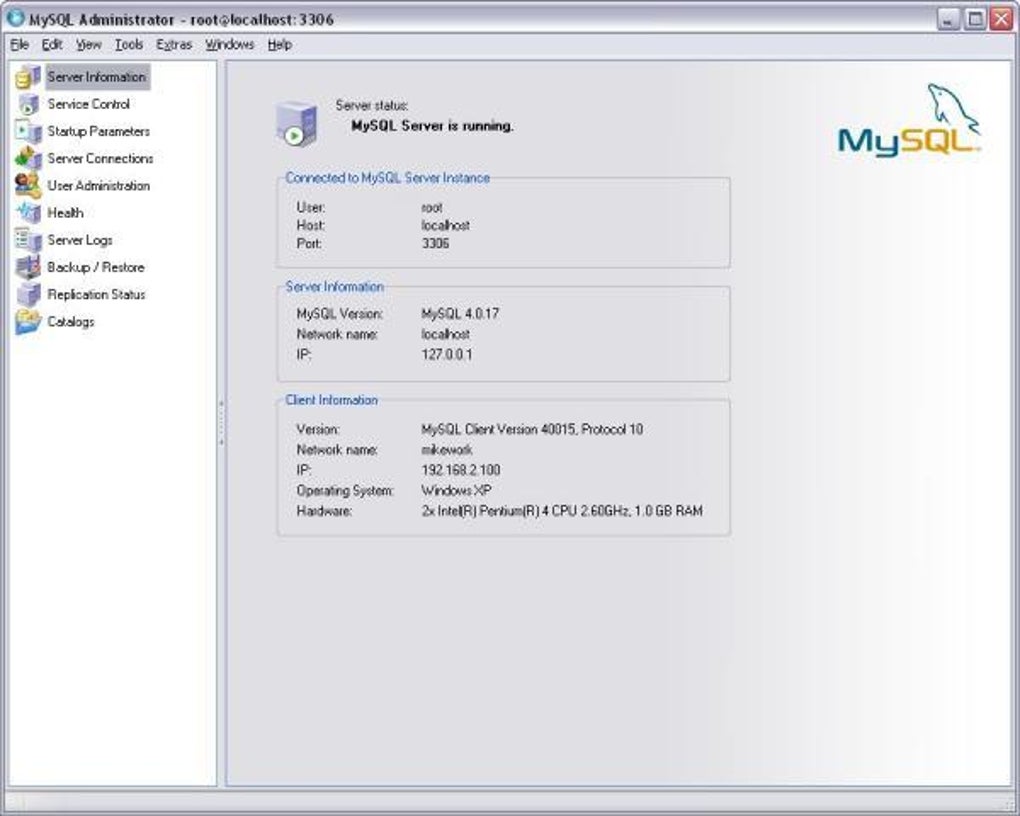MySQL is a relational database management system. MySQL is the widely used database server in the world. This tutorial helps you to install MySQL database server on macOS Sierra 10.12 and High Sierra 10.13 and other supported versions using Homebrew.
- Mysql.server stop; mysql.server restart. In truth, this article is rather a superficial material for beginners who are faced with the problem of running a database on their Mac. It is possible that when using this guide, there will be a lot of questions about working with the mysql server, as this is very specific and professional.
- Installdirmysqlbinmysqladmin.exe -p -u root password NEWPASSWORD Reset the MySQL root password Linux and Mac OS X. If you don’t remember your MySQL root password, you can follow the steps below to reset it to a new value: Create a file in /tmp/mysql-init with the content shown below (replace NEWPASSWORD with the password you wish to use.
- Network/Admin MySQL. Free Trial Driver Booster 6 PRO (60% OFF when you buy) MySQL for Mac. 13,538 downloads Updated: July 29, 2018 GPL.
Step 1 – Prerequisites
MySQL Administrator is a GUI management console for MySQL, with support for tasks such as managing users, configuring MySQL, performing backups, editing table definitions etc. There are fully native versions for Linux/Gtk, Windows and now Mac OS X. This is the first public Beta release of MySQL Administrator for that platform.
Before starting the installation of MySQL using this tutorial you must have the following prerequisites
- Terminal: You must have Mac Terminal access and little knowledge about working with the terminal application.
- Homebrew: Homebrew is a popular package management tools used for installing most open source software like Node. Here is the Homebrew installation tutorial

Step 2 – Install MySQL on macOS
At this time of writing this tutorial, Homebrew has MySQL 5.7.21 version in its main repository. Start a terminal and run command to install MySQL:
Wait for the installation process finish. Now you just need to configure things so that your MySQL server is auto-started
Also, you have to set a strong password for the MySQL root account. Use the following command to set a new password. Make sure to use a strong password.

Step 3 – MySQL Configuration
Mysql Admin For Mac Installer
MySQL server has been installed on your system. The binary files are installed under /usr/local/bin directory and all the MySQL related files are created under “/usr/local/var/mysql” directory. The main confiugration file is created at:
Mysql Admin For Mac Shortcut

You can use above file to customize your MySQL server. Now, Connect to MySQL server using the command:
Step 4 – Manage MySQL Service
Mysql Admin Tool Mac Os
There are mysql.server command available under /usr/local/bin directory, which is used to manage MySQL service. You can use mysql.server command with options status, stop, start, or restart MySQL service on your system.
All done. You have running MySQL server on your system. What next? Visit our MySQL tutorial section to create and manage databases from the command line.
